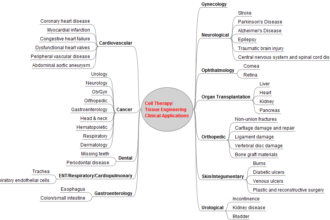In the not-so-distant past, going to the hospital was risky business. You were just as likely to die or be harmed by complications or hospital acquired infections as you were to get better. But recent advances in medical technology, as well as the integration of everyday innovations, like RFID tagging, have changed this situation for the better. Today, doctors and surgeons arrive in the operating room better prepared than ever. The Familiar: Imaging Technology One of the first tools to dramatically improve surgical outcomes is familiar to most patients, and an integral part of both diagnosis and treatment among doctors – medical imaging. X-rays, for example, are over 100 years old, but recent improvements allow doctors to see a greater level of detail on the images. Doctors can also choose among different types of imaging technologies, using MRI, CT, or PET scans to look closely at different internal structures, before and even during surgery. Using advanced imaging technologies allows surgeons to use less invasive and more accurate approaches, thus reducing patient healing time. A Guiding Hand In addition to imaging, computerized guidance tools make surgery less invasive and more accurate, such as those used to perform cataract surgeries. Femtosecond lasers coupled with surgical planning software and iris registration capabilities allow surgeons to make highly accurate incisions in the small and delicate lens of the eye, enabling them to remove cataracts without causing further vision damage. In such a small area, even a tiny tremor could harm the surrounding tissue, so this precision is vital to positive patient outcomes. Biocompatibility’s Benefits When surgeons need to implant a foreign material into the body, they traditionally use materials that the body views as neutral or biocompatible in order to prevent rejection. That’s why surgeons can safely insert implants during a rhinoplasty or breast augmentation – these materials safely interact with the body. Some biocompatible materials may also be meant to dissolve after a period of time so that after the body heals, there’s nothing to remove, while others are used to help the body adhere to an implant, holding it in place during the healing process. These material interactions reduce the need for further surgeries to remove or reposition implants. Tracking Tools One of the most common reasons for post-operative infections in the past was that tools were sometimes accidentally left behind in the body after the surgeon closed up. Often, what was left behind were things like sponges – a perfect breeding ground for bacteria – although larger options like scissors have also been forgotten inside, only discovered after pain, infection, or another procedure detected the foreign body. The technology that has greatly decreased the frequency with which surgical materials get left behind is remarkably simple – RFID tracking. RFID chips and tags are used in hundreds of products we use every day. They allow us to track packages and help stores manage inventory, and now they help surgeons account for all their tools. RFID tracking also helps during sterilization and storage and reduces the labor needed to catalog and keep track of materials. Remote Control Robots The most remarkable innovation in the operating room, and still in the introductory phase, are robots that allow doctors to remotely control a machine that physically performs surgeries. Though not autonomous, these robots have significant advantages over human surgeons – they have all the intelligence of the human with all the dexterity of a robot, an ideal combination. Employing 3D cameras and video-game like instruments, surgeons can watch procedures magnified on a screen as they control the robot. Even the most experienced surgeon may have an occasional tremor of fatigue, but robots don’t experience fatigue. Additionally, robots can rotate a tool a full 360 degrees – human wrists don’t work like that. Most hospitals won’t have a surgical robot in their operating rooms for several years, and with prices between $500,000 and $1.5 million, the barrier to entry is significant. Still, as of 2016, surgical robots are entering the first few operating rooms with intense manufacturer oversight, allowing for improvements and data collection before companies initiate a larger launch. Innovation is the heart of medicine, and we can expect to see more advances in tool development and procedures in the years to come. One new tool to keep an eye on is virtual reality bodies. Currently being developed for VR systems, these bodies allow students and doctors to look inside organ systems while they’re at work, review less commonly addressed anatomical structures and interact with a virtual model before a procedure. These systems may be in medical schools and hospitals soon. Practical advances in surgery are saving hundreds of lives every day, as doctors transform the medical experience with improved tools and techniques. As we can see with surgical robotics, these innovations are only just the beginning.








